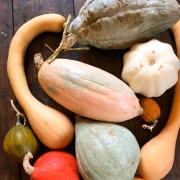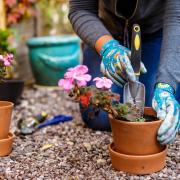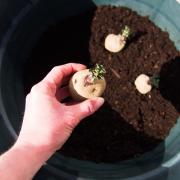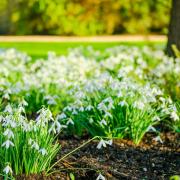August is the month when all your hard work in the garden pays off, but there still plenty to do
Prairie planting
Focus on planting a mixture of ornamental grasses and late flowering perennials to create a relaxed and natural prairie theme. Echinacea and Rudbeckia are perfect partners for tall grasses like Miscanthus sinensis.
Dead heading
Try to make time for a few minutes of deadheading every day to extend the flowering season well into autumn, particularly dahlias and roses. It’s a simple job with big benefits!
Water wisely
Water during the coolest part of the day to stop water evaporating before the plant can absorb it. Dahlias need to be kept well-watered especially when coming into flower. Also keep on top of Rhododendrons and Camellias when the buds are starting to form to prevent them from dropping off.
Spring ahead
Spring flowering bulbs have arrived in the garden centres. Make a head start by under planting your containers with a mix of Daffodils, Crocus and Alliums.

Butterfly garden
It’s a good time to plant some butterfly-friendly plants. Known as the butterfly bush for good reason, buddleias are really easy to grow in almost any soil. Another reliable option that’s loved by bees and butterflies is Hebe Autumn Glory.
Perfect shape
If you’ve been meaning to trim your hedge, but haven’t got around to it yet, now is the time. Different hedges have different needs, but generally speaking, pruning your hedge in late summer will allow any bald patches to recover before it becomes dormant in winter.
Snip snip
Trimming back your wisteria after it’s flowered in late summer will encourage new flowers and help to control its growth. Cut back the long whippy green shoots of the current year’s growth to five or six leaves and remove any dead wood.
Weed control
Weed as often as you can to prevent them going to seed. The effort you put in now will hopefully mean fewer weeds in your garden the next growing season!
Take cuttings
Before the growing season is over, take cuttings of your favourite roses, fuchsias or hydrangeas. Choose a healthy, flowerless shoot and strip away all lower leaves and side shoots so about an inch or less of foliage remains. Cut the bare stem and plant immediately in a gritty/sandy compost mix or perlite.
Show time
Finally, don’t forget to invite friends, family and neighbours into your garden to show off what you’ve achieved!
PLANT OF THE MONTH FOR AUGUST

Rudbeckia Goldsturn
Ideal for creating a splash of late-summer colour, Rudbeckia Goldsturn produces masses of golden yellow daisy flowers with black-brown centres from August to October. It works really well in prairie-style schemes paired with lots of ornamental grasses. It's short enough not to need staking and doesn't spread so fast either, making it a very easy-care plant. It’s also great for attracting bees and butterflies.
GARDEN WILDLIFE

Make your garden bee-friendly
Only four types of UK bee make honey, but all species have a vital role to play in the ecosystem, pollinating our food crops and flowers. If you want to help bees in your garden, plant single flower varieties of daisy and bell shaped flowers – double flowers don’t provide nectar for insects. The flowers on many fruit and vegetable crops are favourites with bees, too – beans, peas and fragrant herbs are loved, as are apples, currants and raspberries. If you have space in or around your vegetable plot, include flowers like azaleas, bluebells, forget-me-nots, foxgloves, lupins and primroses.
Be bee friendly all year round by providing safe homes for them to shelter and hibernate in over winter - it’s easy to knock up a bug box with some old lengths of bamboo or construct a solitary bee hotel by drilling holes into an old fence post. Also, think about growing winter and early flowering plants. Hebe and lungwort are good choices.
READ MORE: What jobs do I need to do in my allotment in August?



























